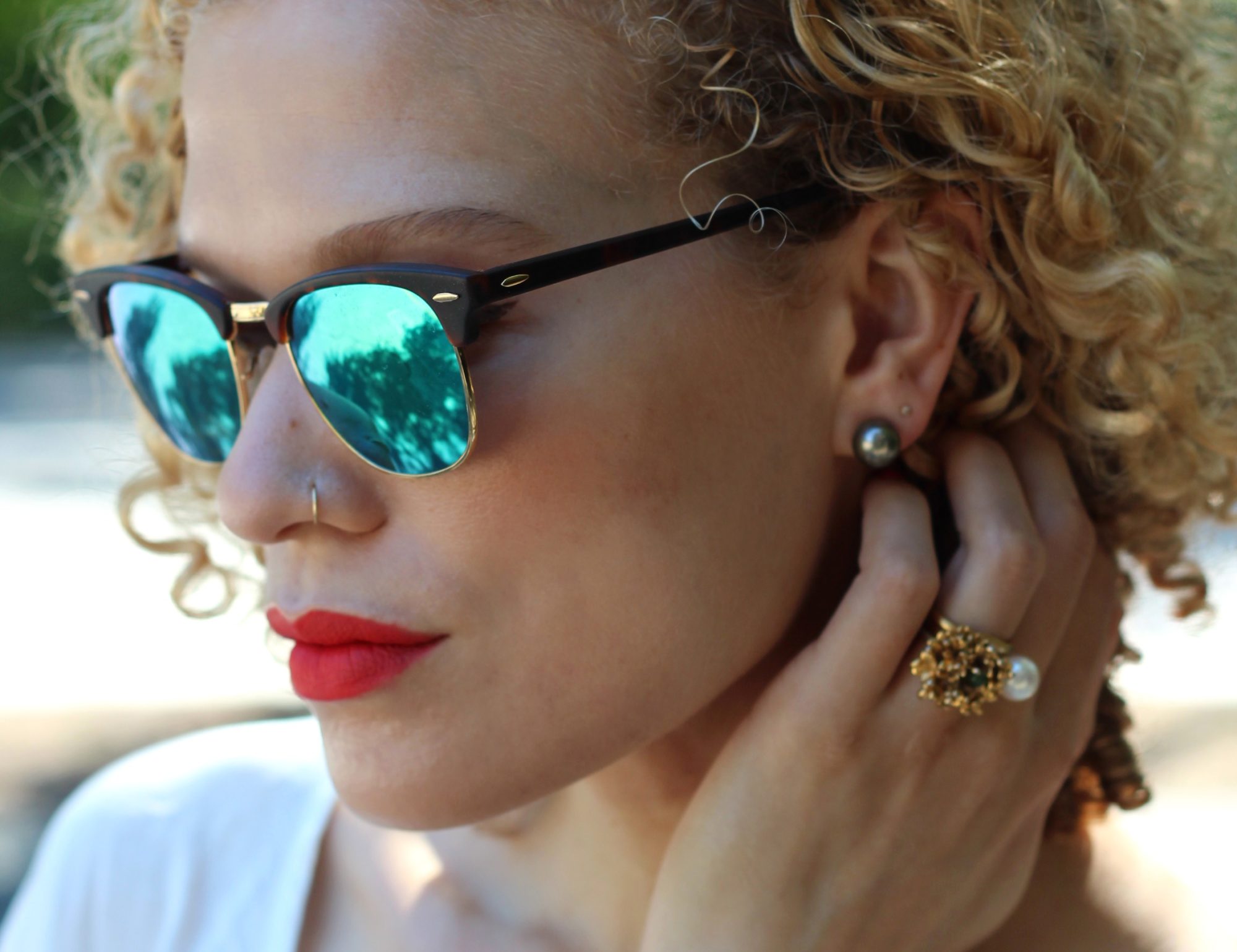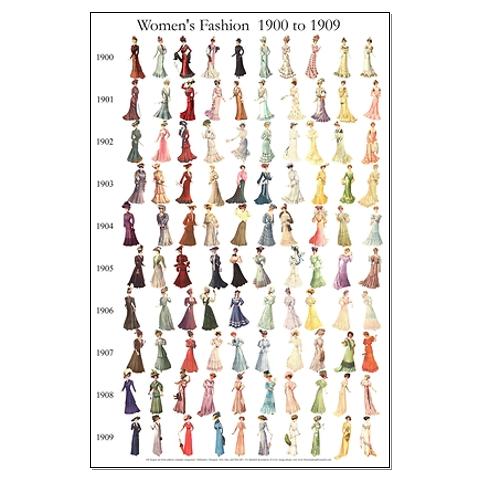Being on trend (let’s put off for now whether or not this desirable) is both more difficult and easier than ever before. There are currently, in this era, this time, more trends simultaneously alive and well than ever before. Pick up a magazine, read the fashion and style pages of some newsmonger or another, poke around on pinterest and street style blogs, watch Bill Cunningham, pay attention when you’re walking down the street – once you hit a certain threshold of data the trends jump out at you left and right. No matter how many there are, though, there’s still a [shifting, arbitrary, somewhat mysterious] hierarchy of cool.
Trends used to be small, powerful details, widely adopted, one following another from season to season. The length of a sleeve, the height of a hem, the volume or cut of a skirt, the placement of a broach. A distinct silhouette can be identified (there are fascinating charts for all kinds of fashion patterns) for almost every year throughout the 1800’s and much of the 1900’s.
image via dressmakingresearch.com
After this dating a photo with clothing gets a bit more difficult, perhaps you can only guess within a decade. We can still do this well up through the 90s. Perhaps there is a bit of branching off, several schools of trends can identify (or evoke) an 80s look. The Madonna school, the Michael Jackson school, the Pat Benetar school, and so on, but even these share umbrella traits of bold, geometric/unnatural silhouettes (think cone bra, think boxy shoulders), bright colors, loud accessories, over-the-top patterns. Like so many things that are tiresome or tricky to define, you know it when you see it.
Today, though, even aside from the fact that it’s impossible to have a comprehensive perspective on your own time, the trends are multiplying faster than we can wear them, and many of them stay active for years. There are so many it’s almost (almost) as if there aren’t any, and we have entered a new era of freedom and flexibility of dress*.
*Still nothing like what the future will see, surely.
There is no getting around it, trends are strange, complex social phenomena. Often baffling (if not outright awful), once in a while classic (a revival of some historic style of dress, maybe), or sophisticated to the modern eye. Highly mutable and notoriously difficult to predict, often with murky origins, they remind me a little of traffic patterns, which I understand to be difficult to predict and untangle cause-wise, approaching true randomness. They sometimes peter out within a month or so, and sometimes persist for many seasons, or persist to graduate out of trend status and into just…stuff we often wear. Some seem to become (or seem to be becoming—historians, I do not envy you your job) part of the conception of basic modern style.
Like anyone, I like some and don’t like others. I do sometimes find it difficult to suspend the awareness that something is a trend while assessing it, which can have a negative impact on my take. When I’ve seen something over and over…sometimes I start to come around. Some are broad (skinny jeans with heels), and some are almost comically detailed (dainty gold knuckle rings with a hammered finish, worn on multiple fingers at different heights). I suppose one convenient thing about trends is that they provide a straightforward formula to follow to look fashionable in the mainstream sense, and if you like the trend, why not? On the other hand, they can leech originality and personality right out of things, such that everyone looks kind of vaguely nice, and kind of vaguely like everyone else*. Then, too, there is the difficulty of discerning when a trend is on the wane, when it has passed some critical point of popularity and takes on an element of vulgarity (one sense of vulgar is simply common to the masses). I think ombre hair is entering this phase now, for example (I was never too keen on that one).
Sporting a trend successfully is about timing, and an ill-timed trend (at least, blindly followed, in the absence of individuality) undermines its own aim. There is something tiresome about the game of this, especially when they can turn sour so suddenly, but I think if you like a trend, go for it. If you stop liking it, you know…stop going for it (and question: did you really like it in the first place?).
Part ii will be a little list. Stay tuned.
*Type any keyword from the next post into pinterest and see what I mean.



